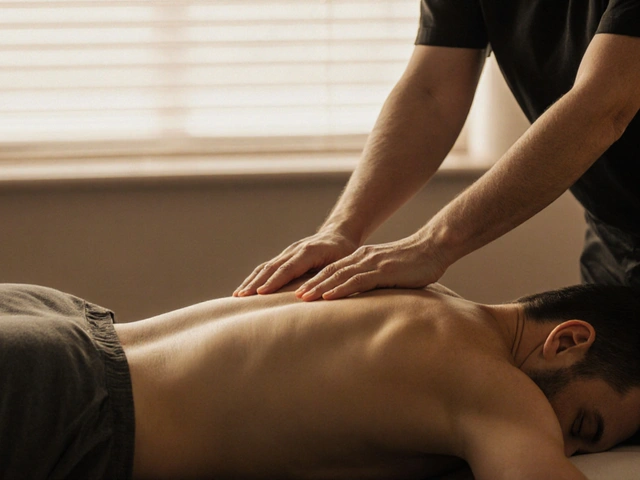Muscle Pain: Quick Relief and Smart Long-Term Fixes
Muscle pain shows up as a tight knot, a deep ache, or sudden sharp flare after activity. You can ease many at home if you know a few simple moves. This tag collects practical guides, therapies, and tips to help you feel better fast.
Quick fixes you can try now
Apply heat for sore, stiff muscles and cold for new swelling or sharp pain. Move gently—short walks, easy shoulder rolls, and slow leg swings stop stiffness from settling in. Try basic self-massage or a tennis ball against a wall to roll out knots. Hydrate and eat protein after workouts. Small changes in movement beat waiting for pain to disappear.
When massage helps most: hands-on work like trigger point massage, Amma, Lomi Lomi, or warm stone therapy can loosen tight muscles and reduce pain. Trigger point work targets specific tight spots that refer pain elsewhere. Amma and Lomi Lomi combine pressure and rhythm to break up tension and calm your nervous system. Stone therapy adds gentle heat to ease deep tightness. If a technique sounds new, start with a short session and tell the therapist about your pain.
Long-term fixes that stick
Strengthen weak muscles and stretch tight ones. Simple routines—twice weekly strength work for hips, glutes, and core—cut down recurring pain for many people. Add daily mobility drills: hip circles, hamstring slides, and chest openers. Practices like Feldenkrais, Hellerwork, and Ortho-Bionomy help change how your body moves and holds tension. They take time, but they change patterns that cause repeat pain.
Self-care that makes a difference: sleep, stress control, and posture matter. Poor sleep and high stress crank up pain signals. Small posture checks often—especially if you sit a lot—stop muscle patterns from getting worse. Use foam rollers and acupressure at home to maintain gains between sessions. Learn a few go-to stretches and use them after workouts or long workdays.
Warning signs that need a pro: see a doctor or therapist if pain follows major injury, causes numbness or weakness, stops you from walking, or grows worse despite home care. Conditions like tendon tears, nerve compression, or infections need timely care. For chronic pain that won’t budge, a mix of manual therapy, targeted exercise, and medical review gives the best chance of lasting change.
Explore this tag for hands-on guides, case tips, and honest reviews of methods like trigger point work, acupressure, Rolfing, and palliative massage. Pick a practical article, try one new habit this week, and note what changes.
Weekly plan: pick two easy habits—10 minutes of mobility each morning and one massage or self-treatment session per week. Track how pain shifts and adjust. Read trigger point and acupressure guides here for quick routines you can use at home. Want a deeper fix? Check posts on Feldenkrais, Hellerwork, and Ortho-Bionomy for approaches that rewire movement and ease chronic muscle pain. Start small, be patient, and observe.

Neuromuscular Massage: Why It Should Be Part of Your Wellness Routine
Neuromuscular massage could be the overlooked element missing from your wellness routine. This technique focuses on relieving chronic pain and improving muscle function. Through targeting specific muscles, it's known to help with tension, injuries, and even stress relief. Adding this therapy to your routine may help improve your overall physical and mental health.
Categories
- Health and Wellness (148)
- Alternative Therapies (86)
- Massage Therapy (40)
- Travel and Culture (15)
- Beauty and Skincare (9)
- Holistic Health (8)
- Health and Fitness (5)
- Spirituality (5)
- Other (2)
- Personal Development (2)



